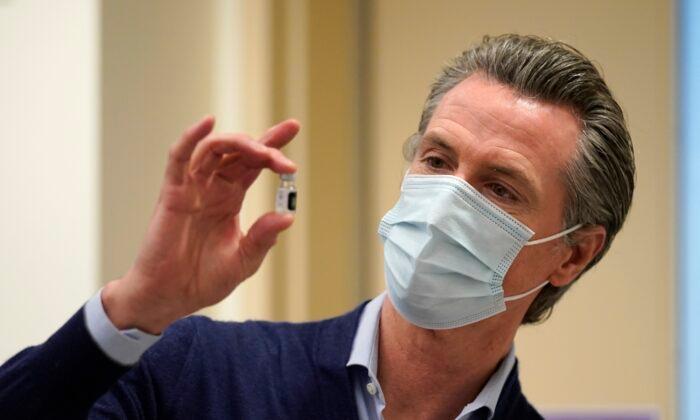The state became the first to record 2 million confirmed coronavirus cases, reaching the milestone on Christmas Eve as nearly the entire state was under a strict stay-at-home order.
There have been a total of 23,947 deaths in the state.
The crisis is straining the state’s medical system well beyond its normal capacity, prompting hospitals to treat patients in tents, offices, and auditoriums.
Officials believe the current surge was driven largely by people who defied the warnings of public health experts and gathered for Thanksgiving without wearing masks or socially distancing, and officials are now begging people to forego Yule and New Year’s festivities.
Meanwhile, Gov. Gavin Newsom said hospitals are under “unprecedented pressure,” and if current trends continue, the number of those hospitalized because of the virus could double in 30 days.
“We could have a surge on top of surge on top of a surge in January and February,” Newsom said in a social media video posting Dec. 24. “I fear that, but we’re not victims to that if we change our behaviors.”
The order will remain in effect in a region if its ICU capacity projected out four weeks—from day 22 after the Regional Stay Home Order started in the region—is less than 15 percent. The order would remain in effect until the region’s projected ICU capacity is equal or greater than 15 percent. This would be assessed about twice a week.
Under the order, private gatherings of any size are prohibited, and only critical infrastructure and retail are allowed to remain open. Bars, hair salons, barbershops, casinos, and indoor and outdoor playgrounds have been ordered to shut down. Retail stores are limited to 20 percent capacity, and restaurants can operate for take-out and delivery only.
Residents must wear masks at all times when outside their homes and continue to maintain social distance.
Currently, the 11-county Southern California region and the 12-county San Joaquin Valley region in Central California are at zero available ICU capacity. The two regions are home to around 33 million people in the state, representing 84 percent of the state’s population.
The crisis in California comes as public health experts fear that Christmas travel and New Year’s Eve celebrations could cause another surge in cases, hospitalizations, and deaths.
Earlier this month, Dr. Robert Redfield, director of the Centers for Disease Control and Prevention, warned that the next few months of the COVID-19 pandemic will be among “the most difficult in the public health history of this nation.”
“So we are at a very critical time right now about being able to maintain the resilience of our health care system,” Redfield said. “The reality is December and January and February are going to be rough times. I actually believe they’re going to be the most difficult in the public health history of this nation, largely because of the stress that’s going to be put on our health care system.”





